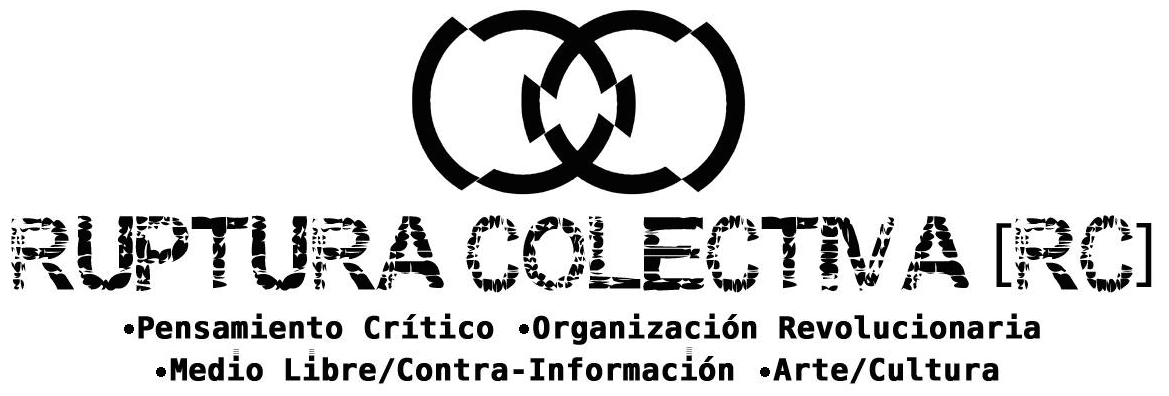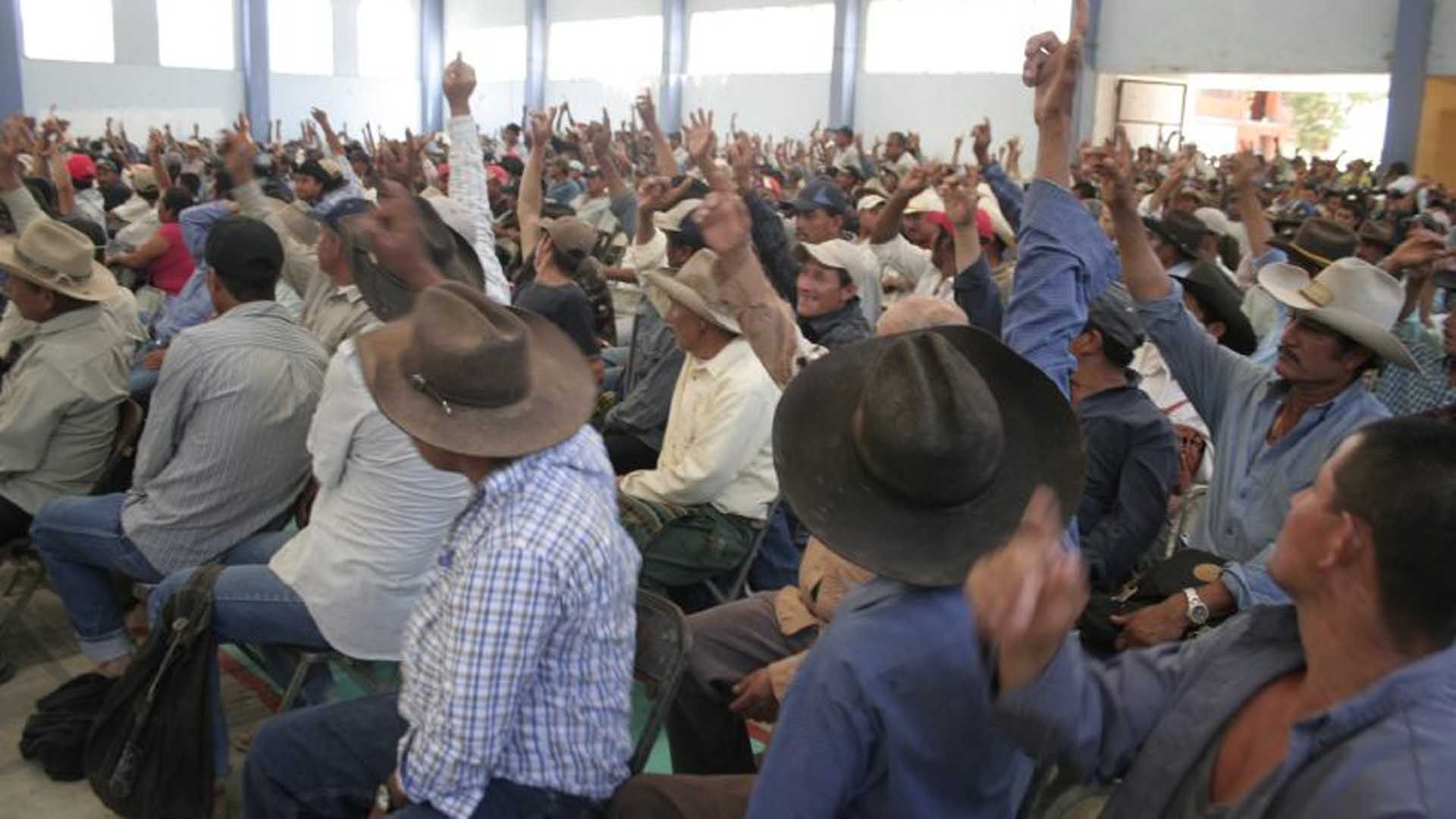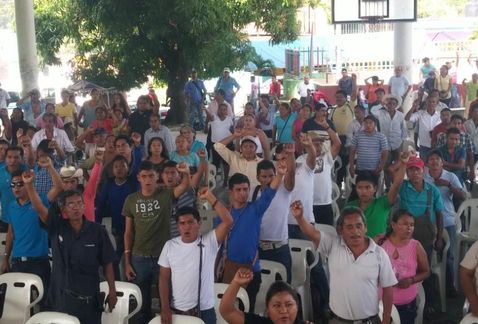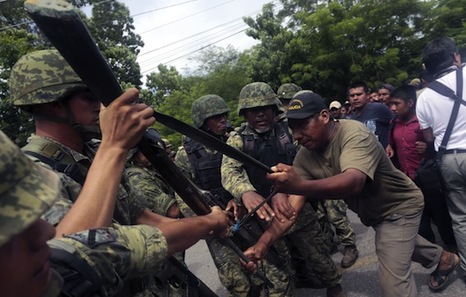
A “comunitario” of the House of Justice of El Paraíso of the CRAC-PC in Ayutla is defended with machete before the attempt of the Mexican Army to disarm their comrades. (August 21th, 2013)
Translation: The Dawn
Finally, one more revolutionary triumph was achieved in México. After 4 long and jubilant years of organization, communication, internal diffusion and intercultural union since the municipality of Ayutla de los Libres presented a document before the Electoral Institute and Civic Participation of Guerrero (IEPC) with the demand of their actual 65,000 inhabitants to self-manage and consolidate a municipal self-government for the electoral day of 2015 -which was denied thanks to all the means available of the political parties PRI, “Partido Verde”, PRD & MORENA and all their families/partisan beneficiaries-, this July 15th, 2018 in the Sports Unit of Ayutla was legitimate and legally elected in a historic assembly the Municipal Government Council consisting of 560 representatives of each of the 140 populations that make up this territory -previously elected in internal assemblies that carried put between February 19 and June 14-, with a total of 4 people per community; two men and two women between representatives and substitutes.
Thus, the presidential figures and political hierarchies are “officially” abolished, as well as the definitive expulsion of the political parties that have done so badly to one of the most impoverished and forgotten regions of the country.
This is the story (which you have to know) and the most relevant precedents of what is happening in Ayutla de los Libres.

Inhabitants of all 140 communities of the municipality met themselves for watch the official designation of their autonomus representatives.
A boom for the autonomy
There seems to be a trend among indigenous communities of increasing vindication of their right to choose their own representatives, rejecting the model of “voting a representative and hoping they deliver what they promised” and instead using their traditional methods to solve the quotidien problems they face. How can they ask a suit-and-tie politician to solve the problems of peasants if their hands are more accustomed to handle paperwork than plowing the ground?
The push that drove 140 settlements and communities of Ayutla de los Libres to take this path was the fact that 8 of 43 students kidnapped by the State of Ayotzinapa were originally from that municipality, and therefore this was one of the epicenters of the protest movement that this mass crime originated, claiming for answers regarding the destiny of the victims, more security in the municipality—and this process originated new, harmonious forms of organization of the peoples, beyond the marches and rallies.
On November 30, 2014, members of the Regional Coordinator of Communitary Authorities – Communitarian Police (CRAC-PC), teachers of the State Coordination of Education Workers of Guerrero (CETEG), and parents of the Ayotzinapa students, with the active support of a big part of the population, decided to occupy what they denounced as the “Narco-City Council” and publicly proclaimed their new authority: the People’s Municipal Council, because “narco cartels have penetrated all levels of government and only this will prevent a new massacres and the forced disappearances we suffer daily” [1]. This autonomist movement also spread to other municipalities: Tecoanapa, San Luis Acatlán and Tlapa de Comonfort (which are geographically close) and, to a lesser degree, to Acapulco in Juárez.
One of the faces of this movement for self-determination, Manuel Olivares Hernández, who is the technical secretary of the Guerrero Netword of Human Rights Organisms, said these words that should teach a lesson for the future: “we’re under a narco-power which has left us with dozens of clandestine mass graves—even Guerrero is a great clandestine cemetery—therefore these municipal councils are going to replace the authorities that don’t guarantee our life to live and respect for our patrimony” [2].
From that day on, autonomists have been working and formed the State Electoral Institute for Citizen Participation (IEPC) of the state of Guerrero and the Superior Chamber of the Electoral Court of the Federation Judiciary Power (TEPJF) to guarantee the holding of a popular referendum realize on the last June 10th and 11th in the center of the municipality.
It’s about time for peoples to self-govern
We’d be too idealist if we said there aren’t obstacles to this process. There’s still a pro-party and conservative current that has opposed the election by uses and customs in an assembly held in October 2015. As happens in many social movements, there is a conflict between different social strata (those who have plenty and those who have little)—in this case, between native and rural people, on one side, and the settlements of the municipal capital, on the other.
Nevertheless, the result of the recent referendum was convincing and decisive: 7,178 voted for the communitary assembly model, while 5,965 voted for the list election model [3] (most of them militants of the corrupt PRI, PAN and PRD parties or their satellite parties).
“The referendum wasn’t easy, because they hadn’t even told indigenous communities that they would vote on how they’d be able to choose their representatives”, says an inhabitant of Ayutla. As a consequence, around 100 people occupied the headquarters of the IEPC on May 25 this year to demand them to listen to the voices of natives.
The results of the vote held on June 10th and 11th confirm that despite the irregularities and the interests of those who don’t actually want a communitarian democracy, the majorities want the system based on “uses and customs” (which respects the traditional ways of making decisions).
Likewise “several political parties have tried to bribe, with presents and money, officials not to show up at the board meetings (…) and they’ve also said that social programs such as “Prospera” would disappear if parties were expelled” from the community.
The “Sebastopol” [4] of autonomy and self-government will continue to win strategic positions and gain support at the local and national levels against the party-business alliance.
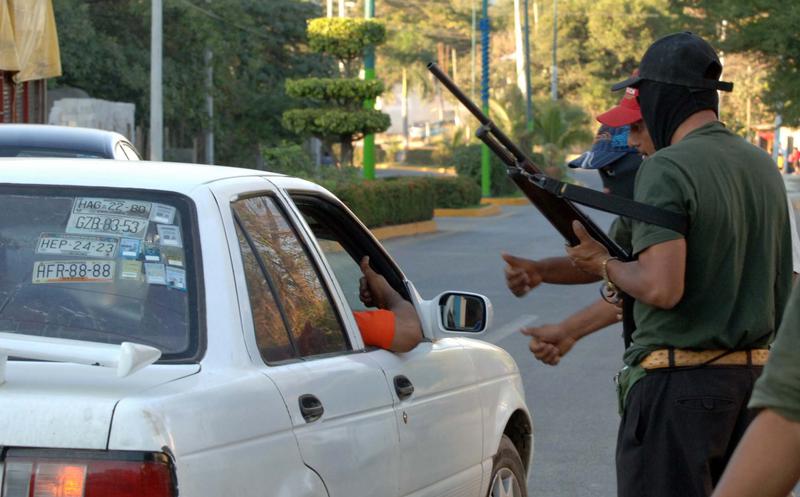
“Comunitarios” of the CRAC-PC realize inspection and surveillance at the entrances of the municipality.
From being out to collective strength
Ayutla is considered the birthplace of the People’s Revolutionary Army (EPR), born in May 1994. Therefore it’s easy to imagine the amount of police raids, vigilance and extra-judicial murders that have been committed by the police and the State with the excuse of capturing guerrilla members.
In the same year, another organization was born: the Me’phaa Indigenous People’s Organization (OPIM), where indigenous women have a great role. In 2016, they denounced that only in that year 20 native women had been killed in Ayutla and the neighboring municipality Acatepec. Due to their anti-militarist work, 16 members and collaborators have been murdered, 7 were detained and 107 have received direct threats (from the government, politicians, drug cartels, and police officers).
Poverty is a determinant factor (although not the only one) to the process of internal organization of the Ayutla communities, because:
(…) according to the latest report of the National Council of Assessment of Social Development Policies (Coneval), from 2010, in Ayutla de los Libres 88% of the population is poor and 50% don’t even have enough to eat.
“A third of its inhabitants is behind the expected education level and 78% don’t have access to basic services” [5].
therefore, the need for economic development in the community is another determinant factor in the struggle for self-determination.
How can we expect the state to increase the economic status of the population when in fact the state is working, through violence and stratification, to direct the flow of capital towards a single social class?
Security is another issue. In 2010, the people of Ayutla became a part of the Regional Coordinator of Communitary Authorities – Communitarian Police (CRAC-PC) of Costa Chica in order to install checkpoints and decrease the amount of crimes, although the official date of the constitution of the PC in Ayutla was 22 December, 2012. In time (and due to infiltrations within the CRAC), there was an internal division from which a new structure was born: the Union of the Peoples and Organizations of the State of Guerrero (UPOEG), which doesn’t precisely have a pristine record as an armed group. But the will of the people of Ayutla has given power to both groups in the realm of security, despite the differences between them, and the political (and even armed) dispute they hold in other regions of Guerrero.
The government was beginning to crumble in early January 2013, when armed groups made it official to media outlets that they were participating in Ayutla. Veiled messages from the high levels of power were being sent regularly to the leaders of these forces, but their activities weren’t suspended for a single day.
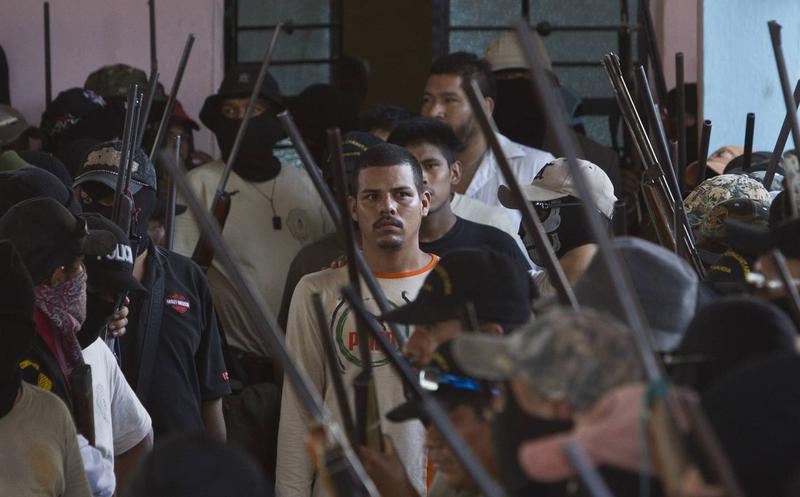
Members of both armed groups retain 54 offenders linked to organized crime. At the meeting, it was decided to postpone the sanctions at a new meeting in the municipality of Tecoanapa.
On January 31, 2013, in the El Mesón community, around 500 people gathered to carry out the first people’s trial against 54 captured criminals who were linked to organized crime.
These initiatives born from towns and neighborhoods (all members of the CRAC-PC are elected in a communitary assembly) caused intense indignation and temper-tantrums in the state government. On August 21 that year, the Mexican army ambushed the CRAC-PC in an attempt to break them. The incident occurred in the “El Paraíso” House of Justice of the homonymous town, and resulted in the capture of six members of the CRAC-PC: Bernardino García Francisco, Ángel García García, Florentino García Castro, Eleuterio García Carmen, Ambad Ambrosio Francisco y Benito Morales Justo. The accusations against them were absurd: kidnapping, carrying weapons and organized crime.
It is necessary to note the case of Arturo Campos Herrera, promoter of the CRAC-PC of El Paraíso, who was selectively detained on December 1, 2013 in the Chilpancingo city, just after an activity of agitation in denouncing the capture of the six detainees on August 21.
Three years went by until their liberation, on March 13, 2016.
Arturo remains imprisoned in Ayutla, but with his head held high and remembering that “this is our crime, providing security and punishing those who comment crimes according to our uses and customs” [6].
Self-construction and some libertarian conclusions for the future
The relevance of admiring communitary democracy exercised through the model of uses and customs is not about the way in which the change is achieved, not about the paradigm shift in the way decisions are made, but about the results achieved through this:
1) The definitive expulsion of political parties; therefore, the constant confrontation with the structure of the modern State.
2) The abolition of a presidential figure and the eradication of political hierarchies, by forming councils made up of locals elected due to their service and interest in the collective development of a territory and of the people inhabiting it—not on the basis of electioneering.
3) The complete and anti-systemic autonomization of the territory, after forming a cooperative economy and strengthening of communitary forms of self-defense, rejecting the handouts of the three levels of government.
We don’t need to be naive (and with this I refer to the second item). The process of election by uses and customs, can be the scenario of the selfish ambitions of organizations or representatives. But there must be a constant and conscious exercise within the community to preserve their system from nourishing rivality or ambition of authority.
Let decisions be made from below always!
Solidarity with the communities of Ayutla de los Libres who celebrate now their autonomy!
Guerrero for the people!
Notes and references
[1] Conversation with Ayutla’s habitants in the XXI CRAC-PC Anniversary, celebrated in the community of Horcasitas in San Luis Acatlán, Guerrero. October 2016.
[2] “Forman consejos populares en Ayutla de los Libres y Acapulco” by Sergio Ocampo & Héctor Briseño, La Jornada, November 30, 2014, p. 7. (http://www.jornada.unam.mx/2014/11/30/politica/007n1pol)
[3] “Gana en Ayutla el modelo de elección por usos y costumbres en asambleas” by Jacob Morales Antonio, El Sur: Periódico de Guerrero, June 14, 2017. (http://suracapulco.mx/1/gana-en-ayutla-el-modelo-de-eleccion-por-usos-y-costumbres-en-asambleas/)
[4] Warship used by anarcho-syndicalist mariners in the Rebellion of Kronstadt in 1921.
[5] “Ayutla de los Llibres, el lugar donde los civiles ejercen la justicia” by Daniela Rea, CNN México, February 1st, 2013. (http://expansion.mx/nacional/2013/02/01/ayutla-de-los-libres-el-lugar-donde-los-civiles-ejercen-la-justicia)
[6] “Vida de Arturo Campos: Creación de la CRAC-PC en Ayutla” (Autobiography)
Original text in Spanish:
1,323 total views, 2 views today
